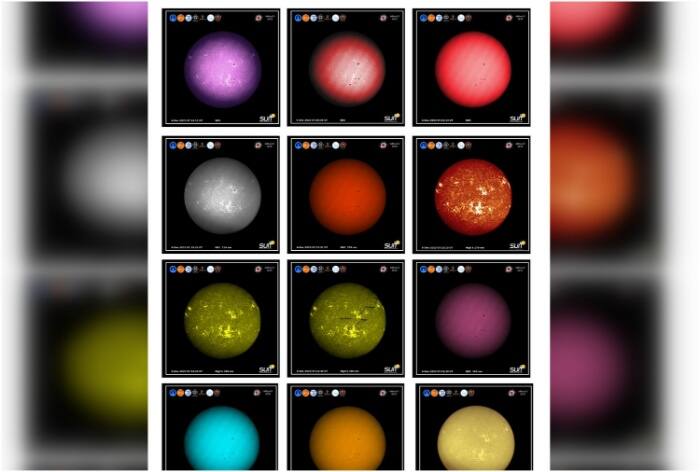ISRO said the Solar Ultraviolet Imaging Telescope (SUIT) on board the Aditya-L1 has successfully captured the first full-disk images of the Sun in ultraviolet range.

Aditya-L1 Updates: A specialized instrument aboard ISRO’s Aditya-L1 spacecraft has successfully captured stunning images of the Sun in near ultraviolet range, the national space agency informed on Friday.
According to ISRO, the Solar Ultraviolet Imaging Telescope (SUIT) on board the Aditya-L1 has successfully captured the first full-disk images of the Sun in the 200-400 nm wavelength range.
SUIT captured images of the Sun’s photosphere and chromosphere in this wavelength range using various scientific filters, ISRO said.
“On November 20, 2023, the SUIT payload was powered ON. Following a successful pre-commissioning phase, the telescope captured its first light science images on December 6, 2023,” ISRO said in a statement.
“These unprecedented images, taken using eleven different filters, include the first-ever full-disk representations of the Sun in wavelengths ranging from 200 to 400 nm, excluding Ca II h. The full disk images of the Sun in the Ca II h wavelength has been studied from other observatories” it said.
Among the notable features revealed are sunspots, plage, and quiet Sun regions, providing scientists with pioneering insights into the intricate details of the Sun’s photosphere and chromosphere.
Aditya-L1 Mission:
The SUIT payload captures full-disk images of the Sun in near ultraviolet wavelengthsThe images include the first-ever full-disk representations of the Sun in wavelengths ranging from 200 to 400 nm.
They provide pioneering insights into the intricate details… pic.twitter.com/YBAYJ3YkUy
— ISRO (@isro) December 8, 2023
SUIT observations will help scientists study the dynamic coupling of the magnetized solar atmosphere and assist them in placing tight constraints on the effects of solar radiation on Earth’s climate, ISRO added.
The development of SUIT involved a collaborative effort under the leadership of the Inter-University Centre for Astronomy and Astrophysics, Pune. This collaboration included ISRO, the Manipal Academy of Higher Education, the Centre for Excellence in Space Science India at IISER-Kolkata, the Indian Institute of Astrophysics Bengaluru, the Udaipur Solar Observatory (USO-PRL), and Tezpur University Assam, it was stated.
SWIS becomes operational
Last week, the Indian Space Research Organisation (ISRO) informed that the Solar Wind Ion Spectrometer (SWIS), the second instrument in the Aditya Solar Wind Particle Experiment (ASPEX) of its maiden solar mission, Aditya L1 was now operational.
“The Solar Wind Ion Spectrometer (SWIS), the second instrument in the Aditya Solar Wind Particle Experiment (ASPEX) payload is operational. The histogram illustrates the energy variations in proton and alpha particle counts captured by SWIS over 2-days,” ISRO said in a post on X.
As per a statement issued by ISRO, the ASPEX payload onboard India’s Aditya-L1 satellite is performing normally.
ASPEX comprises two cutting-edge instruments – the Solar wind Ion Spectrometer (SWIS) and STEPS (SupraThermal and Energetic Particle Spectrometer).
The STEPS instrument became operational on September 10, 2023. The SWIS instrument was activated on November 2, 2023, and has exhibited optimal performance, the statement mentioned.
ISRO further stated that the ASPEX has begun its measurements of solar wind ions.
“SWIS, utilizing two sensor units with a remarkable 360° field of view each, operates in planes perpendicular to one another. The instrument has successfully measured solar wind ions, primarily protons and alpha particles,” the statement said.
(With inputs from agencies)

